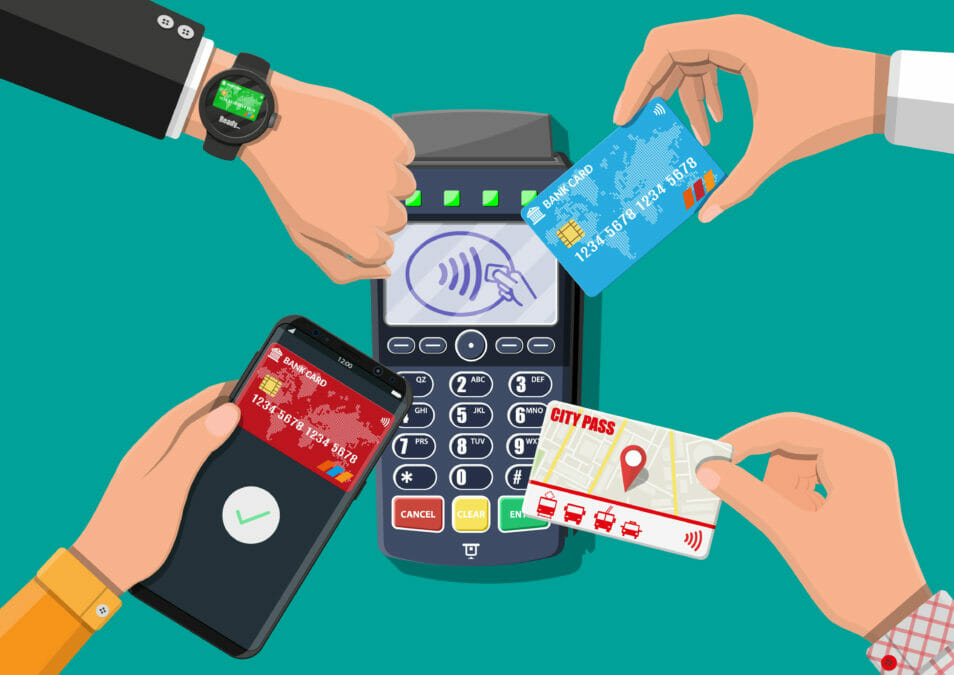Back in the old days cash, coin or bartered goods were the currency of choice. The transfer of value was direct, passed between hands that were known to each other and trusted. This all changed across the last century with the introduction of non-physical money transfers. First there were telegraph transfers, then credit cards, Automated Clearing Houses and, most recently, the introduction of online banking, mobile wallets and contactless payments.
Each step forward has made it easier to move digital monies around, but at the rate of digital adoption, the now established payment architectures are archaic leaving the businesses they were built to enable dealing with extra layers of complexity, risk, middle-men, and additional fees while their consumers face clunky checkout experiences.
Consumers are demanding cardless experiences
As a society we’re becoming disengaged with the cumbersome process of card payments and more conscious than ever about typing pin codes into public machines, with antibacterial gel on stand-by. With today’s available technology there is just no need to queue, swipe, PIN and collect paper receipts. We’re moving into an age of completely contactless spending, one where people can exit a taxi without “paying”, leave a shop without visiting the till, and get instant credit at a digital checkout.
Where e-wallets account for 8%-10% year on year growth of ecommerce transactions, with no sign of slowing down. We’re moving into a digital-first generation that is used to buying things with the tap of a phone screen or a scan of their face. So much so, physical wallets are becoming obsolete as phones stay glued to hands.
Open finance creates opportunity for collaboration
Although as a society we’re engaging less and less in person or making payments over a counter, fintechs are leading the way with technology to trust customers are who they say they are, digitally, so that they can access frictionless payment experiences without merchants incurring the risk of fraud.
The rise of open finance has enhanced the opportunity for fintechs to collaborate by bringing together financial data and open banking to create better, more accurate financial services. For example, the affordability score of the future.
Current processes to assess affordability in lending and mortgage markets are outdated and cumbersome. By bringing together credit files, open banking account information and quick seamless account to account payments experiences, companies can create a holistic view of affordability.
Understanding when a person gets paid, how much and what they spend on, enabling them to make responsible lending decisions, quickly, and ensure the consumer sets up automatic recurring payments on a timeline that’s best for them.
Fintech disruption of the banking industry: innovation vs tradition?
Incumbents can’t keep up with consumer demand
For banks and acquirers this fast-moving collaboration and disruptive space can leave them at a disadvantage. Many of the biggest problems consumers face today are simply because of the way that banks were built, and most banks continue to rely on legacy infrastructure and payment systems that are largely incompatible with consumers and businesses leading to high fees, long delays and risk of fraud when sending and receiving payments.
These numerous patches and updates over the years have been massively outpaced by consumer expectations. Financial institutions need to design processes that incorporate cutting-edge innovations at a pace they were not previously expected to. A pace that is set by consumers and kept up with by fintechs.
Trust in digital payments can match that of hard cash in hand
The new wave of Fintechs in the payments space are disrupting incumbents by replacing the ageing systems that people most commonly use. Thanks to the power of open APIs in a forward-looking regulatory environment, and a lack of technical legacy constraints, Fintechs have the speed, agility and technology to address current consumer and business needs, to fix the old problems and create new solutions.
With this technology available, businesses get peace of mind that the risk of fraudulent payments is low as access to bank account information and identity accounts build accurate profiles highlighting customers that are known and trusted – without ever needing to make payments in person.
We’ve moved beyond bartered goods, into online banking but now is the time to accelerate to a cashless and cardless future.
There’s a unique opportunity for fintech to lead this movement by encompassing innovation, financial data, consumer and merchant demand to create seamless, trust building online experiences.
We’re on the cusp of a major societal-shift away from outdated and expensive systems built on legacy, and towards a truly frictionless, safe way to move money around — forcing a large, entrenched ecosystem to adapt to the benefit of consumers and merchants everywhere.
Written by Damien Cahill, COO, Vyne







